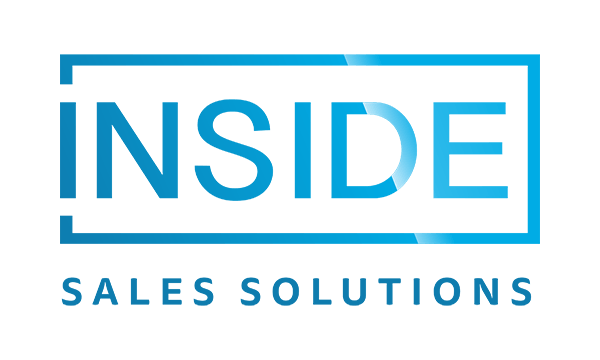This post was originally published in January 2023. It has been updated in May 2025 to reflect the latest lead generation strategies for big data and IT organizations navigating complex, high-stakes sales environments.
When you’re working in sales, big data and IT buyers are some of the most complex targets. Breaking through the noise requires more than high-volume outreach between the long cycles, crowded inboxes, and multiple stakeholders.
It demands precision, strategy, and technical expertise. That’s why traditional lead generation tactics can fall flat in this space, wasting time and resources on unqualified leads and poorly-timed pitches.
To excel in this sales vertical in 2025 and beyond, sales teams need to overhaul their lead generation strategies, align their outreach with actual needs, and learn how to deliver the right messages when it matters most.
With that in mind, here are lead generation tips to help cut through the noise, focus your outreach, and build a meaningful pipeline.
1. Don’t Overlook Your Existing Lead List—Work the Pipeline You Already Have
When looking to win big in sales, it can be tempting to forget your older Marketing Qualified Leads (MQLs) and start over from scratch, especially in big data and sales, where deals often take months (or longer). Instead of letting older leads gather dust, our first lead generation tip is to work the pipeline you already have.
Remember, in this space, timing is everything. What wasn’t a priority for a prospect six months ago might be essential today. Big data buyers may move slowly, but timing shifts fast.
When you enrich and revisit leads from past campaigns, you might find that prospects have budget changes, new leadership, or updated tech mandates.
Pro tip: Use targeted follow-up and personalized check-ins instead of waiting for inbound signals. A well-timed check-in can spark a conversation that leads to a closed deal.
2. Expand Your Reach Across Technical Roles and Buying Committees
Next on our list of lead generation tips: Consider expanding your reach across roles and buying committees. While your initial buyer personas are great for your outreach efforts, they likely aren’t the end of the story for your target audience.
By mapping key personas in IT, security, data science, and procurement, you can develop tactics that address precise priorities, pain points, and levels of influence in the buying process.
Then, tailor messaging for each role. For example, a technical evaluator might want to understand how your solution fits into existing infrastructure or meets compliance standards. At the same time, an economic buyer will likely be more concerned with risk and ROI.
3. Validate and Strengthen Your Prospect Data (Don’t Rely on Luck)
In big data and IT sales, your prospect data is everything. If your leads are outdated, irrelevant, or phone numbers are disconnected, you’re not just slowing down your efforts—you’re kneecapping them.
Unfortunately, research shows that only 35% of sales professionals trust the accuracy of their organization’s data.
To build an effective lead generation engine in 2025, start by strengthening your data. Ensure it’s high-quality across your total addressable market (TAM), especially within the most critical roles (IT leaders, data architects, and technical evaluators). Then, focus your outreach efforts on contacts with verified contact info to increase connection rates and reduce wasted effort.
4. Lead With the Phone, Support With Sequences
A multi-channel outbound approach can be powerful, but focusing most of your initial efforts on cold calling is critical. Why is this one of our top lead generation tips?
Cold calling remains the best tool for breaking through the noise in saturated markets like big data and IT. Studies show that top performers actually favor cold calls over cold emails. Why?
These direct conversations help sellers create urgency, build rapport, explain complex solutions, and quickly qualify interest (something no amount of automated messages can replicate).
After you set the stage with cold calling, use multi-channel sequences (such as email or social) to support those efforts. A well-placed call puts you at the center of the buyer’s attention. Then, follow up with thoughtful emails or messages to support your efforts to nurture those leads.
5. Review Past Wins and Misses—Then Optimize Your Approach
One of the smartest things sellers in big data and IT can do to improve lead generation is strategically review their performance. Assessing previous wins and losses is a useful post-mortem exercise that can result in key insights and useful takeaways.
Start by analyzing what actually worked. Which buyer personas converted the fastest? What messages helped overcome objections?
However, don’t assume what worked in the past will be successful today. Use these insights to double down on what’s clearly still working and refine your strategy based on real feedback and engagement data.
The technology sales landscape is quickly changing, and a strategy that worked even just a few months ago might no longer be as useful. However, it could give you a solid foundation for where to go next.
6. Collaborate Tightly Between Marketing and Sales for Better Follow-Through
In long-cycle, multi-stakeholder deals, marketing and sales need to be properly aligned. Even strong leads can slip through the cracks without a seamless handoff and follow-through.
Start by solidifying the lead handoff process. Clearly define when a lead is ready to be passed from marketing to sales, and what determines if a lead is marketing qualified.
Then, equip sales with the talking points and content they need to fit each lead’s industry and stage. When your sales team is armed with the right tools to continue the conversation, they can better nurture their lead.
7. Stay Consistent—Avoid Feast-or-Famine Lead Gen Cycles
A common trap in business development is the “feast-or-famine” cycle—ramping up lead generation only when the pipeline looks thin. This reactive approach creates spikes of effort followed by dry spells, which can stall growth and erode momentum.
Instead, prioritize consistency. Build lead generation into your weekly schedule, just like any critical business function.
Whether the pipeline is full or empty, consistent prospecting ensures you build relationships and keep opportunities flowing. A regular cadence of outreach—calls, emails, content, or networking—compounds over time, creating a reliable pipeline that supports long-term success.
Don’t wait until it’s urgent. Make it a habit.
8. Tap Into Outsourced SDR Support to Keep Pipeline Moving
Your team has realistic bandwidth limitations. Building a steady, consistent pipeline in big data and IT takes relentless top-of-funnel effort.
Keeping that engine running can quickly strain internal resources and lead to overlooking high-quality prospects. Instead of struggling, turn to outsourced SDR support to help you scale and improve your outcomes, all without overloading your internal team.
A well-managed outsourced SDR team can help you expand your reach, handle early-stage prospecting, master lead gen cycles, and maintain consistent engagement.
The best part? With your top-of-funnel under control, your internal team can shift their efforts to high-impact areas that count, like closing.
Your 2025 Lead Gen Plan: Focus on What Works, Drop What Doesn’t
Sales success in big data and IT doesn’t come from a high-volume guessing game or random activities. It comes from consistent, well-targeted outreach. And in a complex buying space, the teams that win are the ones who focus on strategy.
If you’re ready to improve your pipeline, support your team, and get higher-quality deals on the books, we’re here to help. We’re Inside Sales Solutions, and we help businesses like yours overcome pipeline challenges by outsourcing top-of-funnel sales activities.
Want help putting these lead generation tips into action?
Connect with Inside Sales Solutions to build a smarter, more consistent lead gen program for your team.

